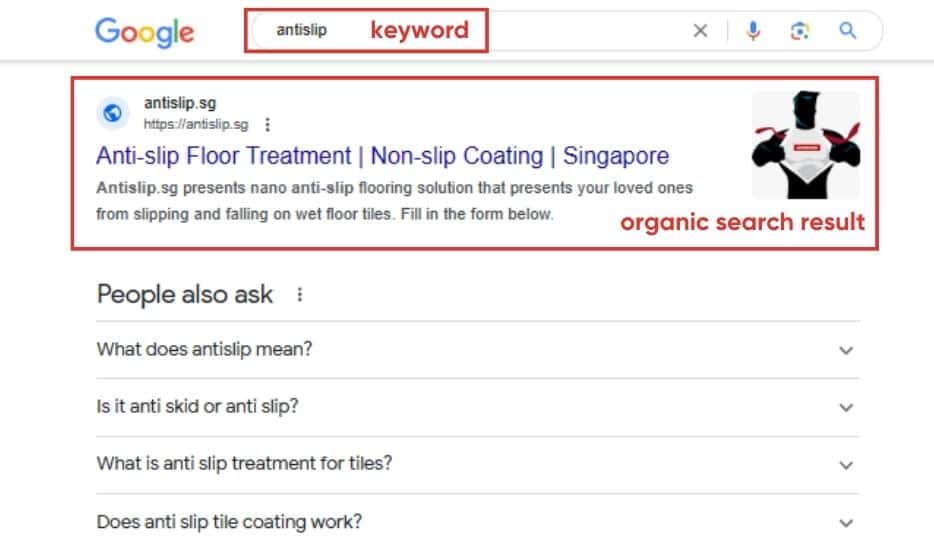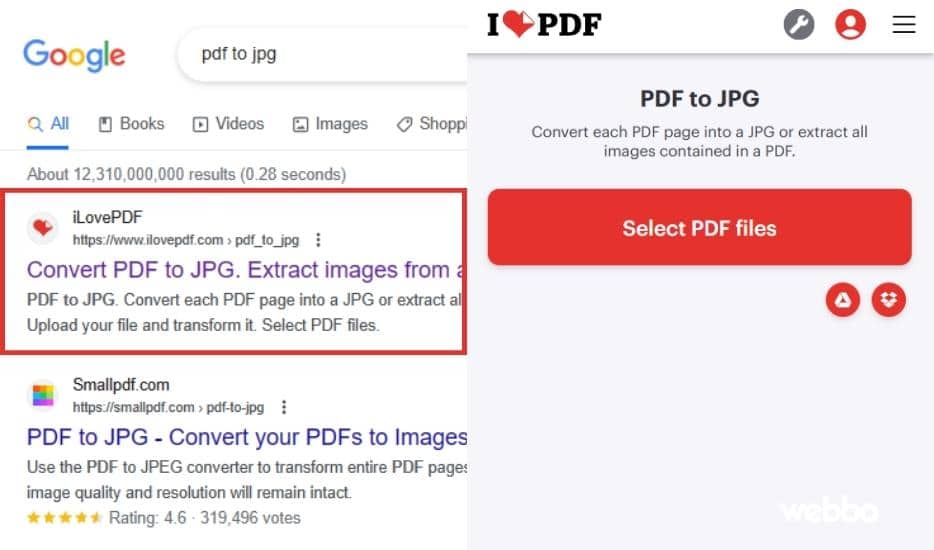In this article, we’re going to delve into the world of Search Engine Optimization, commonly known as SEO. If you’ve encountered the term SEO marketing Singapore before, you may have felt overwhelmed by the technical aspects that come with it. However, understanding SEO is crucial for businesses in Singapore seeking online visibility and growth.
Whether you’re seeking a concise understanding of SEO or have some knowledge but still have doubts about the technical side, particularly when it comes to the various SEO services available on platforms like Fiverr that promise fast rankings with all the technical details, you might be wondering, “How do they do it?” Fret not. I’m here to help.
What is SEO?

SEO stands for ‘Search Engine Optimization.’ Breaking down the term, it combines ‘search engine’—like Google, Bing, and Yahoo—with ‘optimization’.
Optimization refers to the process of making something as effective, efficient, or successful as possible. When we talk about optimization in the context of Search Engine Optimization (SEO), it means–taking specific actions to improve a website’s visibility and ranking on search engines like Google.
Let’s say you have a business that provides anti-slip floor treatment, and you want more people to find it when they search for “antislip” on the search query like the one below 👇:

These changes can include selecting the right keywords that people are likely to use in their searches, creating high-quality and relevant content, improving the website’s loading speed, making it mobile-friendly, and getting other reputable websites to link back to yours.
All these efforts aim to make your website more appealing to search engines, ultimately leading to more visibility and potential customers finding your website.
So, optimization, in simple terms, means making strategic improvements to your website to boost its visibility and attract more visitors from search engines.
Short Summary:
- SEO Definition: SEO stands for ‘Search Engine Optimization,’ a combination of ‘search engine’ (like Google, Bing, and Yahoo) and ‘optimization.’
- Optimization Meaning: In the context of SEO, optimization refers to making a website as effective and efficient as possible in order to improve its visibility and ranking on search engines.
- Goal of SEO: The main goal is to increase the visibility of a website so that more people can find it when searching for related products or services on search engines.
- Key SEO Strategies:
- Selecting the right keywords that people are likely to use in their searches.
- Creating high-quality, relevant content that appeals to both users and search engines.
- Improving the website’s loading speed to enhance user experience.
- Ensuring the website is mobile-friendly, considering the increasing use of mobile devices.
- Getting backlinks from other reputable websites to build credibility and authority.
- Purpose: These efforts aim to make the website more appealing to search engines, leading to higher visibility, more website visitors, and potential customers.
What is SEO: Know SEO Jargon Terms
Before we begin, understanding these terms is key to navigating SEO effectively. Here’s a concise guide to some common SEO jargon:
- Keywords: Words or phrases users search for.
- Long-Tail Keywords: Longer and more specific keyword phrases that visitors are more likely to use when they’re closer to a point-of-purchase or using voice search.
- Meta Tags: Hidden tags that describe your page’s content.
- Meta Title: The title of a webpage that appears in search results.
- Meta Description: A brief description of a webpage that appears under the meta title in search results.
- Backlinks: Links from other websites to yours.
- Internal Links: Links that go from one page on a domain to a different page on the same domain.
- Outbound Link: A link from your website to another website.
- Anchor Text: The clickable text in a hyperlink.
- Alt Text: Text description for images.
- PageRank: Google’s algorithm for ranking web pages.
- SEO Audit: Evaluation of a website’s SEO effectiveness.
- XML Sitemap: A file that helps search engines understand your website while crawling it.
- Organic Traffic: Visitors who come to your website from unpaid search engine results.
- Black Hat SEO: Unethical SEO tactics that violate search engine guidelines.
- White Hat SEO: Ethical SEO practices that adhere to search engine guidelines.
- Bounce Rate: The percentage of visitors who navigate away from the site after viewing only one page.
- SERP: Search Engine Results Page.
- Organic Search Result: Listings on a SERP that appear because of their relevance to the search terms, not due to paid advertising.
- Paid Search Results: Listings on a SERP that are advertisements, for which businesses pay to appear at the top of the results for specific keywords.
Why is it Important to do SEO?
Why is it important to optimize your website for search engines to display it among the top results?
Simply put, when someone searches for a particular service you offer, let’s say ‘aircon servicing’, optimizing your site ensures that your business appears at the top of those search results.
Appearing at the top of search results dramatically increases the likelihood that potential customers will click on your website.
Higher visibility in search results directly correlates with more website traffic, which can lead to increased inquiries, sales, and, ultimately, business growth.
To better understand which search engine draws the most traffic from users in Singapore, here’s the latest data from Ubersuggest (as of 14/11/2023):
- Google.com – 1,114,617,929 Monthly visitors
- Bing.com – 74,042,925 Monthly visitors
- Yahoo.com – 50,969,604 Monthly visitors
Additionally, Ubersuggest provides revealing insights into the search behavior of Singaporeans on Google. For instance:
Google.com –
- 8,100 Monthly searches for ‘aircon servicing‘
- 4,400 Monthly searches for ‘renovation loan‘
- 14,800 Monthly searches for ‘massage spa‘
By aligning your SEO strategy with these insights, you can more effectively reach your target audience where they are most active.
In a digital world where competition is just a click away, standing out on the first page of search results can make a significant difference in capturing and retaining customer attention.
Market share of leading search engines across Singapore
Below is a screenshot from Statista, displaying the market share of the leading search engines in Singapore as of September 2023. It provides a clear view of how much traffic each search engine is drawing in Singapore, helping you understand their relative popularity and reach.

As you can see, Google leads with the highest number of visitors at 95.1%, followed by Bing at 2.55%, and Yahoo at 1.41%. Other search engines like DuckDuckGo and Yandex have 0.34% and 0.27%, respectively, with the remaining 0.33% attributed to various others.
From this data, it’s clear how vital SEO is. Aim to have your website appear on the first page of Google’s search results – that’s where all the attention is. It’s similar to having your shop in the most visible spot on a bustling street; the better your location, the more visitors you’ll attract!
How Search Engines Work
Getting to know how search engines function is key to learning the basics of SEO. It’s much like how books are sorted and found in a big library.
Let’s go through a simple explanation covering key points starting with crawling, indexing, ranking, and the search engine result page:
1. Crawling

For Example: Imagine these crawlers as librarians exploring an enormous library. They roam through aisles (the internet), discovering every book (webpage) they can find, noting new titles and updated editions, much like how crawlers find and follow new and updated webpages.
Crawling (Exploring the Library): Search engines use bots, often referred to as “crawlers” or “spiders,” to discover new and updated content.
This content could be a webpage, an image, a video, a PDF, etc. Crawlers visit webpages, follow links on those pages to find new URLs, and then bring data about those webpages back to the search engine’s servers.
This process allows search engines to gather information from across billions of web pages.
2. Indexing

For Example: This is similar to librarians cataloguing books in the library. Each book (web page) is categorized and indexed based on its content, title, and author. Just like books in a library, if a webpage isn’t indexed, it’s like it doesn’t exist in the search engine’s database. webpage, the search engine processes and indexes it.
Indexing (Cataloging Books): After a crawler finds a webpage, the search engine processes and indexes it. Indexing means storing every webpage in a giant database from where it can later be retrieved.
Then, the page is added to the search engine’s catalogue. If a webpage is not indexed, it cannot be displayed in search results.
3. Ranking

For Example: Think of this as a librarian assisting a patron with a query. The librarian sorts through the catalogue to recommend books (web pages) that best match the query. Factors like the book’s popularity, author credibility, and publication date are akin to a webpage’s relevance, content quality, and backlinks.
Ranking (Choosing the Best Book for a Query): When a user performs a search, the search engine sifts through its index to provide the most relevant and useful results. This process is known as ranking.
Several factors influence this ranking, including the relevance of the webpage’s content to the search query, the quality of the content, user experience, backlinks, and various other SEO factors.
4. Search Engine Result Pages (SERPs)

For Example: This is like the librarian presenting a list of books that best match the patron’s request. Just as the librarian may also recommend magazines or reference articles, search engines provide varied content types like images, videos, and featured snippets on their results pages.
SERPs (Displaying the Books): The final output is what users see on the search engine result pages. These pages display a list of results that the search engine has determined are the most relevant to the user’s query.
SEO: The Foundation
Alright, we’ve gone through the basics of SEO and how search engines operate. But first, I want to share a little tip that many people miss when they’re doing SEO themselves.
You see, sometimes people get so caught up in optimizing their content or diving into the technical side of SEO that they forget the main purpose of SEO. Ever wondered why, despite all your efforts, your website isn’t ranking well? Here’s the thing: the goal of a search engine is to show users pages that are relevant to what they’re searching for. This means your content isn’t just for show – real people are reading it.
For instance, if your content isn’t unique, simply duplicates what’s on other sites, or fails to address what people are searching for, they won’t stick around. And if they don’t stay, your site will drop in the rankings. You’ve got to make your website useful for their search.
Consider incorporating engaging elements like relevant images and videos or handy free tools such as a quotation calculator or a free downloadable e-book. These features not only enhance your site’s appeal but also significantly improve your rankings, mainly because they attract and engage visitors who actually use your website.
Moreover, if your content is relevant and useful enough that other reputable sites link back to yours, this results in stronger backlinks. Such links enhance your site’s credibility with Google, leading to higher rankings and a more robust position against competitors.
Take a look at the screenshot below from ilovepdf.com.
Despite having minimal copywriting, it ranks first.
Why? Google recognizes that people frequently visit and use this site, showing that it’s highly relevant to their search queries.

Remember, if your website has lots of content that’s standard and similar to what’s available elsewhere, people won’t have a compelling reason to visit your site. And if your website is slow, that just makes things worse, as people are quick to leave if pages take too long to load.
Keep these points in mind as we dive into the different types of SEO optimization.
SEO: Keyword Research
In SEO, when we talk about “keywords,” we mean the words or phrases that people type into search engines like Google when they’re looking for something. These keywords determine what shows up in the search results.
Now, imagine you have a business, providing air conditioning services. When someone types in a query like “aircon services” in the search bar, you want your website to appear at the top of the results because that’s where people are more likely to click.
But here’s the thing: You’re not the only one in the air conditioning business. Your competitors also want to be at the top of those search results. So, it becomes a bit of a challenge because you’re all trying to do the same thing – to be the first choice when someone searches for aircon services.
So, in a nutshell, keyword research in SEO helps you figure out which words people are using to search for services like yours.
How to start your keyword research
Imagine you’re a business owner specializing in air conditioner repairs. Here are simplified steps for your keyword research:
Start with Seed Keywords – Begin your keyword research by identifying a few fundamental keywords that represent your core services or products. These are typically broad terms related to your business.
For example, if you’re in the air conditioning repair business, your initial seed keywords could include “air conditioner repair,” “AC service,” or “HVAC maintenance.”
Use Keyword Research Tools – Use tools like Google Keyword Planner, Ubersuggest, and SEMrush to discover related keywords, assess their search volumes, and gauge competition levels. These tools help you identify valuable keywords for your business.
Analyze Competitors – Research local air conditioning repair businesses in your area and examine their websites. Identify keywords they prominently feature on their service pages, blog posts, and meta tags.
Keep an Eye on Trends – Stay informed about industry trends and current events that may affect keyword popularity. Create content around trending topics when relevant to attract users searching for up-to-date information.
For example, if there’s a heatwave in your service area, create blog posts or articles about “how to keep your home cool during a heatwave.” This addresses a current need and can attract more visitors.
Balance Search Volume and Competition – Strike a balance between keyword search volume (demand) and competition (difficulty). While high-volume keywords can attract more traffic, they may also be highly competitive. Consider both factors when selecting keywords.
For example, choose keywords like “AC maintenance checklist” (moderate search volume) alongside highly competitive keywords like “air conditioning repair” (high search volume) to create a well-rounded strategy.
Group Related Keywords – Group related keywords into topic clusters or themes. This enables you to create organized content and internal linking strategies, improving your website’s overall SEO structure.
For example, create a topic cluster focused on “AC maintenance” that includes keywords like “AC cleaning tips,” “AC tune-up checklist,” and “AC filter replacement guide.”
Focus on Relevance and User Intent – If a user searches for “how to fix a broken AC unit,” create informative content with step-by-step repair instructions. If they search for “emergency AC repair service,” ensure your content emphasizes your immediate response and availability.
Use Keyword Variations – Try to include keyword variations and synonyms related to your primary keywords. This broadens your reach and ensures you capture different search queries that potential customers might use.
For example, alongside “air conditioner repair,” incorporate variations like “AC servicing,” “air conditioning fixing,” or “HVAC repair” to cover a wider range of search terms.
Focus on Long-Tail Keywords–Long-tail keywords are longer and more specific phrases that often have lower competition. They are valuable for targeting users with precise needs or queries related to your business.
For example, instead of only focusing on “AC repair,” consider targeting long-tail keywords like “affordable AC repair in Bedok” or “24/7 emergency air conditioner repair service.
Plan For One Keyword per Page – Choosing just one main keyword lets you focus all your efforts on making your page great for that keyword. This makes it more likely to show up higher in search results.
If you try to use lots of main keywords on one page, it can confuse search engines and hurt how well your page ranks. It’s like having many pages on your website, all fighting for the same top spot in search results, and that’s not a good idea.
SEO: The Optimization
By now, you probably know that there isn’t a single solution that works perfectly for every website when it comes to SEO and ranking on search engines.
But don’t fret! I’ve broken down optimization into different types so you can identify which one needs attention if your website is falling behind.
Keep in mind that the level of optimization also depends on your competition. This means that some industries might be more challenging to succeed in.
Without further delay, here’s a list of SEO aspects to consider:
On-Page SEO
On-page SEO focuses on making your website’s individual pages as search-engine-friendly as possible. This includes incorporating relevant keywords naturally into your content, optimizing title tags and meta descriptions to describe your page’s content accurately, and making sure your URLs are clear and concise.
It also involves improving the overall structure of your pages, ensuring proper use of headers (H1, H2, etc.), and implementing internal linking to connect related content.
In-short: Optimizing individual web pages with keywords, quality content, and proper structure for search engines.
Off-Page SEO
Off-page SEO involves activities that occur outside your website but have a significant impact on its rankings. The most important aspect of off-page SEO is building high-quality backlinks from other trustworthy websites. These backlinks act as endorsements for your site’s credibility and quality.
It also includes activities like social media marketing, online PR, and influencer outreach, all of which contribute to improving your website’s reputation and authority in your niche or industry.
In-short: Building your website’s reputation through backlinks and online mentions from reputable sources.
Technical SEO
Technical SEO is like the behind-the-scenes maintenance of your website. It involves optimizing various technical aspects to ensure search engines can crawl, index, and understand your site effectively.
This includes tasks like optimizing site speed to improve user experience, fixing broken links to prevent a poor user experience, maintaining search engine rankings, and ensuring proper use of structured data to help search engines better understand your content. It also covers tasks like creating and submitting XML sitemaps, improving mobile-friendliness, and managing duplicate content issues.
In-short: Ensure your website’s technical aspects are in good shape for efficient search engine crawling and indexing.
Local SEO
Local SEO is necessary for businesses with physical locations or those serving specific regions. It involves optimizing your online presence to ensure that your business shows up when people search for local products or services.
This includes setting up and optimizing Google My Business listings, obtaining online reviews, ensuring consistent NAP (Name, Address, Phone Number) information across the web, and creating location-specific content. Local SEO also focuses on local keyword optimization to help your business appear in local search results and maps.
In-short: Making your business easy to find for local customers in online searches.
Content SEO
Content SEO is the practice of creating and optimizing the content on your website to rank well in search engines and resonate with your audience. It involves in-depth keyword research to identify topics and search terms your audience is interested in. Then, you create high-quality content that addresses these topics while naturally incorporating relevant keywords.
Content SEO also includes optimizing images, using proper headings, and ensuring a clear content structure. The goal is to provide users with valuable and engaging content while making it search engine-friendly.
In-short: Creating valuable and optimized content that attracts and engages your target audience.
E-commerce SEO
E-commerce SEO focuses on optimizing online stores to improve their visibility in search engine results pages (SERPs) and drive more organic traffic. It involves various tasks such as optimizing product descriptions, titles, and images for relevant keywords, improving the user experience by simplifying the checkout process, and implementing structured data to enhance product listings in search results.
Additionally, e-commerce SEO includes strategies for managing product reviews, creating informative product category pages, and addressing issues like duplicate content and canonicalization to ensure that search engines can index and rank your product pages effectively.
In-short: Improving the online visibility of your e-commerce store to attract more shoppers and increase sales.
Mobile SEO
Mobile SEO focuses on optimizing your website for mobile devices, as an increasing number of users access the internet on smartphones and tablets. This includes making your website responsive, which means it adapts to different screen sizes and orientations.
Mobile SEO also involves improving page load times on mobile devices, simplifying navigation, and ensuring that all content is easily accessible and readable on smaller screens. Google’s mobile-first indexing means that Google primarily uses the mobile version of the content for ranking and indexing, making mobile optimization one of the key factors for SEO success.
In-short: Ensuring your website functions well on smartphones and tablets, considering the rise in mobile browsing.
International SEO
International SEO is important for businesses or websites targeting audiences in multiple countries or regions. It involves optimizing your website to rank well in different languages and locations.
Key aspects include using hreflang tags to indicate language and regional targeting, creating geographically targeted content, and optimizing metadata and URLs to align with local search trends. International SEO also addresses currency and shipping considerations for e-commerce sites targeting global markets.
The goal is to ensure that your website can effectively reach and connect with audiences from various parts of the world while considering their language and cultural preferences.
In-short: Tailoring your website to reach a global audience by considering language, location, and cultural differences.
Now that you have a better understanding of the various aspects of SEO from the list above, you can not only identify which area your website may be lacking but also clearly communicate your priorities to SEO agencies.
This way, you can let them know precisely which aspect of SEO you want them to focus on.
SEO: Monitoring & Analytics
Once you’ve done the SEO optimization, it’s best to keep an eye on things. You can’t just set it and forget it. Regularly checking and tweaking is key, especially for things like fixing broken links. Search engines love fresh content, so updating your site often is a smart move.
In SEO monitoring and analytics, there are several key areas you should focus on to ensure your website’s performance is optimized. Here’s a breakdown of what to look at and some recommended tools to use:
Key Areas to Monitor:
- Traffic Sources:
- Check out how people are landing on your site. Are they coming from Google searches, clicking through from social media, following links from other sites, or typing your URL directly?
- Tip: If lots of traffic is coming from a specific source, like Instagram, beef up your efforts there. If not many are coming from Google, it might be time to focus more on your SEO.
- Keyword Rankings:
- See where your website shows up in search results for the keywords you care about.
- Tip: If you’re not ranking high for important keywords, it’s time to tweak your content. Make sure those keywords are used in a natural, helpful way on your pages.
- Backlink Profile:
- Look at who’s linking to your site. Are these reputable sites? Are the links relevant to your content?
- Tip: If you’re getting links from good-quality sites, great! If not, or if there are spammy links, work on building more high-quality backlinks.
- Page Loading Speed:
- Check how fast your site loads. Slow loading can turn visitors away.
- Tip: If your site is slow, you might need to optimize images, streamline your coding, or switch to a faster hosting service.
- Bounce Rate and User Engagement:
- See if visitors are quickly leaving your site (high bounce rate) or if they’re interacting with your content.
- Tip: High bounce rate? Make your content more engaging, improve your site layout, or ensure your pages load quickly.
- Mobile Responsiveness:
- Ensure your site looks good and works well on mobile devices.
- Tip: If your site isn’t mobile-friendly, consider a redesign since, nowadays, more and more people browse on their phones.
- Content Quality and Relevance:
- Is your content useful, interesting, and up-to-date?
- Tip: Regularly update your content. Keep it fresh and relevant to what your audience is interested in.
- Technical SEO Health:
- Look for technical issues like broken links, crawl errors, or duplicate content.
- Tip: Fix these issues as they can hinder how well search engines can understand and rank your site.
So, in a nutshell, it’s like keeping your car in top shape. Regular checks and fine-tuning in these areas will keep your website running smoothly and performing well in the immense internet highway!
Recommended Tools:
- Google Analytics: Offers comprehensive insights into website traffic, user behaviour, and various metrics that help you understand your target audience.
- Google Search Console: Essential for monitoring your site’s presence in Google search results, including impressions, clicks, and indexing status.
- SEMrush or Ahrefs: These tools provide a wide array of features, including keyword research, backlink analysis, competitor analysis, and site audits.
- Moz Pro: Known for its domain authority metrics, Moz also offers tools for keyword research, link building, and site audits.
- Screaming Frog SEO Spider: Great for crawling websites and identifying technical issues like broken links, redirects, and duplicate content.
- GTmetrix or Google PageSpeed Insights: Useful for analyzing your website’s loading speed and providing suggestions for improvement.
- Yoast SEO (for WordPress): Helps in optimizing content with focus keywords, meta descriptions, and readability analysis.
Remember, the goal of monitoring and analytics in SEO is not just to collect data but to gain actionable insights that can guide your ongoing SEO strategy. Regularly reviewing and acting on these metrics can significantly improve your site’s search engine performance.
SEO: What Should You Avoid
When it comes to SEO, there are several pitfalls you should avoid to ensure your efforts lead to positive outcomes. Here’s a list of things to steer clear of:
- Keyword Stuffing: Overloading your content with too many keywords can make it unreadable and penalized by search engines. Always aim for natural, meaningful use of keywords.
- Buying Backlinks: Purchasing backlinks, especially from questionable sources, can lead to penalties from search engines. Focus on earning backlinks organically through quality content.
- Ignoring Mobile Optimization: With the increasing use of mobile devices for web browsing, not optimizing your site for mobile can hurt your SEO and user experience.
- Neglecting User Experience (UX): A website that’s difficult to navigate or slow to load can drive visitors away and negatively impact your SEO. Prioritize a clean, efficient, and enjoyable UX.
- Using Duplicate Content: Replicating content either from other sites or within your own site can be detrimental to your SEO efforts. Always strive for unique and original content.
- Overlooking Local SEO: Neglecting local SEO can mean missing out on significant traffic and engagement if you have a physical business or a local target audience.
- Skipping Meta Descriptions and Title Tags: These elements are essential for SEO and user engagement. They should be compelling and include relevant keywords for the best impact.
- Ignoring Analytics: Not using analytics to track your SEO progress is a missed opportunity for improvement. Tools like Google Analytics provide valuable insights.
- Failing to Update Content: Outdated content can lose relevance and effectiveness over time. Regularly review and update your content to keep it fresh and pertinent.
- Disregarding Search Engine Algorithm Updates: Search engines constantly update their algorithms. Not staying informed about these changes can lead to ineffective or harmful SEO practices.
- Using Non-Descriptive URL Structures: URLs that are too long, filled with numbers or codes, or not descriptive can be less effective for both users and search engines.
- Focusing Solely on SEO: While SEO is important, don’t lose sight of the overall goal – providing valuable content and a great user experience. SEO should complement these elements, not overshadow them.
Avoiding these common pitfalls will help you create a more effective and sustainable SEO strategy that benefits both your website’s search engine rankings and the overall experience for your visitors.
SEO: 10 Myths & Misconceptions
SEO is a vast field that evolves constantly, and with that evolution comes a number of myths and misconceptions. This can be particularly daunting for newcomers in the field, especially when they get lured into unethical practices. Here’s a breakdown of some common misconceptions and how they relate to services you might find on platforms like Upwork or Fiverr.
- Can you really achieve instant results with SEO? SEO is a long-term strategy and it takes time to see results. Beware of individuals or services promising immediate results or top rankings. Google’s algorithms are complex and it takes time for them to index and rank your website accordingly. Patience is key here.
- Does using more keywords lead to better rankings? Nowadays, search engines favor content that is valuable and readable for users, not just packed with keywords. In fact, if there are too many primary keywords in your content, you might get penalized.
- Is it okay to duplicate content for SEO purposes? This is a common misconception, especially among new SEO specialists. Duplicate content can hurt your SEO and lead to penalties. Each piece of content on your website should be unique and provide value to your audience.
- Are Web 2.0 backlinks still effective for SEO? This is a method where SEO professionals create free blogs on platforms like WordPress or Blogger and use them to create backlinks to their website. While this technique may have been effective in the past, today’s search engines prioritize the quality of backlinks over quantity. This means that mass-producing low-quality backlinks from Web 2.0 sites is unlikely to improve your website’s rankings and can even lead to penalties. It’s better to focus on earning high-quality backlinks from reputable sources.
- Does a high Domain Authority (DA) guarantee the value of a backlink from a poor-quality website? Even if a site has a high DA, the relevance of that site to your content is important. Search engines, like Google, look at the context and thematic alignment between the linking and receiving sites. A backlink from a high DA site unrelated to your niche may not be seen as valuable.
- Are meta tags the key to SEO success? While it’s important to use meta tags correctly, they’re just one piece of the SEO puzzle. Some believe that stuffing keywords into meta tags will skyrocket their page to the top of search results, but this is simply not true. In fact, Google doesn’t even use the keywords meta tag in web ranking.
- Does investing in paid search advertising improve a website’s organic search rankings? Running Google Ads or other paid search campaigns doesn’t directly boost your organic search rankings. While ads can increase visibility and traffic, they don’t influence your organic position.
- Does higher traffic to a website always translate to higher search engine rankings? More traffic is great, but it doesn’t automatically lead to higher rankings. Search engines consider many factors for ranking, including relevancy, user experience, and backlink profiles.
- Does social media activity have any impact on SEO? While social media signals don’t directly influence search rankings, a strong presence on social media can lead to more backlinks and website traffic, which are key factors in SEO.
- Do longer articles always rank better in search results? There’s a belief that simply writing longer content guarantees better SEO rankings. While comprehensive articles can cover a topic thoroughly, length alone isn’t a surefire way to rank higher. Search engines prioritize content that best satisfies user intent, whether it’s long or short. Quality, relevance, and user engagement are key, not just word count.
The best SEO practices are those that provide a great user experience and add value to your audience. It’s important to keep up-to-date with the latest SEO strategies and avoid falling into the trap of these misconceptions. And always remember, if it sounds too good to be true, it probably is.
Recap: Key SEO Concepts
Recapping the key concepts of SEO:
- SEO is a Long-Term Strategy: Effective SEO takes time and continuous effort. Instant results are unrealistic; patience and persistence are key.
- Quality Content is Key: High-quality, relevant content that satisfies user intent is fundamental for good SEO.
- Keywords Should be Naturally Integrated: Rather than stuffing content with keywords, they should be used naturally and contextually.
- Backlinks Must Be Earned: Quality backlinks from reputable sites are valuable. Buying backlinks or using manipulative link schemes can harm your SEO.
- Mobile Optimization Is a Must: With the increasing prevalence of mobile browsing, having a mobile-friendly website contributes to good SEO.
- User Experience (UX) Matters: A website that’s easy to navigate and quick to load enhances user experience and positively impacts SEO.
- Local SEO Can’t Be Overlooked: For businesses serving local communities and attracting the local target audience.
- Regular Analytics Review is Important: Using tools like Google Analytics to track and analyze your website’s performance helps in making informed SEO decisions.
- Algorithm Updates Should Be Monitored: Staying updated with search engine algorithm changes ensures that your SEO tactics remain effective.
- SEO is Not Just Technical: It’s also about creating a valuable, engaging user experience and providing quality content.








